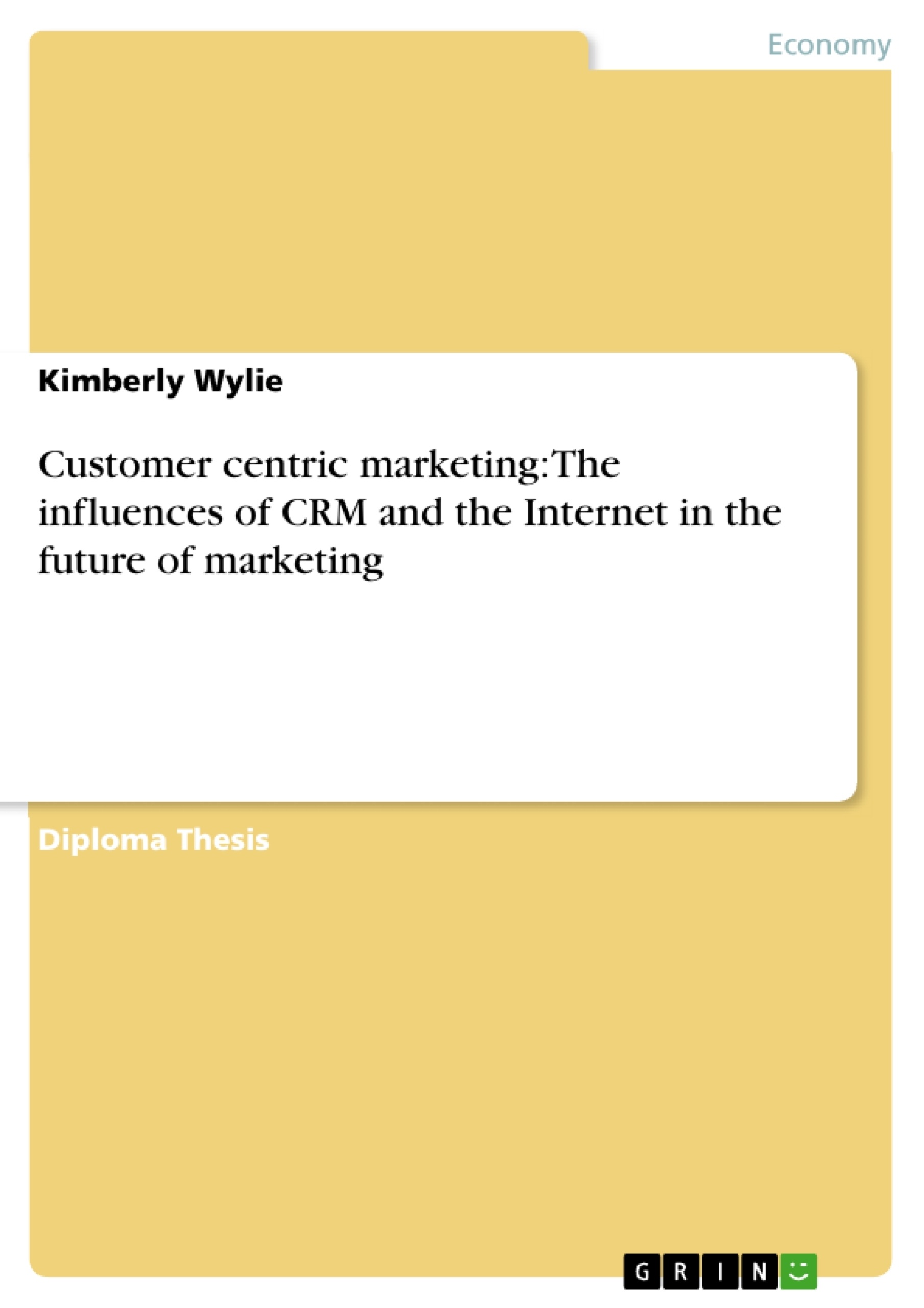Only a few short generations ago, the global economy was predominated by agricultural and tradesman businesses. Consumers frequented businesses that were close to their physical location, as limited transportation gave them little other feasible choice. Tradesmen provided customizable goods made specifically for their clients needs, on small or individual scales of production. The life cycle of a product, during this era, typically began with a customer order for a product. With the advent of the Industrial Revolution, this quickly changed.
Inhaltsverzeichnis (Table of Contents)
- CHAPTER 1: INTRODUCTION
- Historical Perspective
- Purpose of this Study
- CHAPTER 2: METHODOLOGY
- Methodology
- CHAPTER 3: REVIEW OF RELATED REFERENCES
- Introduction
- Literature Review
- CRM Literature
- eCRM Literature
- Web Based Markets and Their Customers
- Relationship Marketing
- Customer-Centric Marketing
- Summary
- CHAPTER 4: ANALYSIS
- Introduction
- Migration to the 'Old′ Era of Knowing the Customer
- Technology and Customer-Centric Marketing
- Customer Data
- Summary
- Chapter 5 SUMMARY
- Introduction
- Conclusions
- Summary Benefits
- Recommendations
Zielsetzung und Themenschwerpunkte (Objectives and Key Themes)
This study aims to analyze the revival of customer-centric marketing, particularly focusing on the influences of CRM and the internet in shaping the future of marketing. The study investigates the historical evolution of marketing practices, tracing the shift from mass production to a more personalized approach driven by technology.
- The impact of CRM and the Internet on the evolution of marketing strategies
- The shift from mass marketing to customer-centric marketing
- The importance of understanding customer needs and preferences in the digital age
- The role of technology in enabling personalized marketing experiences
- The implications of customer-centric marketing for both organizations and consumers
Zusammenfassung der Kapitel (Chapter Summaries)
- Chapter 1: Introduction - This chapter provides a historical perspective on the evolution of marketing practices, starting from the era of agricultural and tradesman businesses to the advent of mass manufacturing and the current revival of customer-centric marketing.
- Chapter 2: Methodology - This chapter outlines the methodology used in the study, describing the research approach and data collection techniques.
- Chapter 3: Review of Related References - This chapter delves into a literature review, examining existing research and theories related to CRM, eCRM, web-based markets, relationship marketing, and customer-centric marketing. It aims to provide a comprehensive understanding of these concepts and their relevance to the study.
- Chapter 4: Analysis - This chapter analyzes the migration from mass marketing to a customer-centric approach, highlighting the role of technology and customer data in shaping this transition. It explores the implications of this shift for organizations and consumers alike.
Schlüsselwörter (Keywords)
This study focuses on key terms and concepts such as customer-centric marketing, CRM (Customer Relationship Management), eCRM (electronic Customer Relationship Management), the internet, digital marketing, personalized marketing, customer data, and relationship marketing.
- Arbeit zitieren
- Kimberly Wylie (Autor:in), 2003, Customer centric marketing: The influences of CRM and the Internet in the future of marketing, München, GRIN Verlag, https://www.grin.com/document/60896



